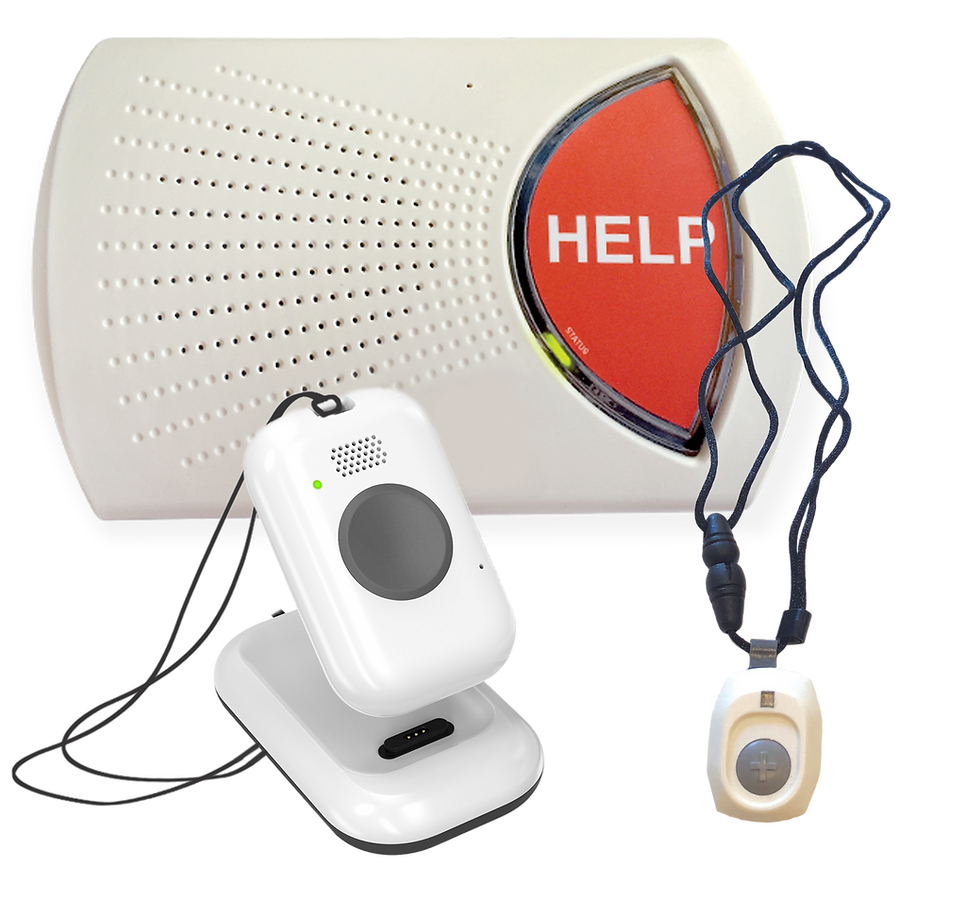Guide To Getting The Most Out Of Emergency Response Systems
- Josh Fultz
- Aug 4, 2022
- 3 min read
Updated: Sep 26, 2022

August is MedicAlert Awareness month. Most seniors and medical professionals know what MedicAlert bracelets, cards, and other accessories symbolize, but back in 1978 that wasn't the case. Even though the MedicAlert bracelets had been around since 1958, there wasn't much awareness of their meaning in the broader community.
In 2022 this awareness month not includes the classic MedicAlert items, but it now also includes Emergency Response Systems (ERS). We've all seen the "Help! I've fallen..." commercials, but do we know what safety and luxury features ERS providers now offer?
While Freudenthal still offers the basic ConnectHOME system that uses a wearable device (bracelet or pendant) with and emergency button, we also offer the more advanced ConnectANYWHERE system that can do so much more. While the ConnectHOME system requires a landline and only works in your home, the ConnectANYWHERE system uses GPS tracking and mobile technology to protect you no matter where you go.
Getting Started.
Start by evaluating your or a loved ones’ specific needs and abilities. For example, will you or the loved one be able to understand how to operate a system? Does the person that will be using the ERS have a disorder that could hinder communication with a call center, like aphasia or hearing loss? Will they be able to put on the device or push the button?
We've put together some key things to think about when choosing which device is right for the situation.
What do you need it to do?
Fall detection. Falls are perhaps the most common motivator for obtaining a medical alert system. Nearly 36 million older Americans a year experience a fall, and more than 1 in 5 falls causes an injury, according to the U.S. Centers for Disease Control and Prevention.
Call for help. Devices with help buttons can connect the wearer to a live person at a response center or to emergency services such as the police or fire department.
The ConnectHOME can only be used in the home and requires a phone landline.
The ConnectANYWHERE can travel with your loved one anywhere they go, including out in their yard or even to the grocery store. It does not require a phone.
Location detection and tracking. A device with GPS is especially useful if your loved one is still driving and relatively independent.
What kind of equipment will work best?

Is it wearable? You'll want a device your loved one finds comfortable. The ConnectHOME and ConnectANYWERE are both comfortable to wear and unobtrusive.
Can it only be used for emergencies? The ConnectHOME is only for emergencies but the ConnectANYWHERE can be used for any questions you may have like, "what's the weather for today?"
Is it fully waterproof? The ConnectHOME is fully waterproof and can be worn in the shower, but the ConnectANYWHERE is only water resistant. It's better to take it off and leave it close by during bathing.
What's the range? The ConnectHOME has a shorter range of only 80 yards around the base station. The ConnectANYWHERE uses the AT&T mobile network and can go anywhere you can go.
Is the speaker loud enough? A care recipient with hearing loss might have trouble hearing the person at the response center speaking through the device or the base unit.
How's the battery life? Both systems have long-life batteries. The ConnectANYWHERE comes with a recharging station.
How do you set it up? We come out and set everything up for you.
How much does it cost? The ConnectHOME system is only $15 per month and the ConnectANYWHERE is $35 per month.
Take Away:
Personal response systems not only deliver peace of mind, but they can be a lifeline in emergency situations. Take time as a family to discuss your needs and if you still have questions don't hesitate to call Freudenthal at 816-676-8050. We're always here to help you stay healthy, happy and at home!









Comments